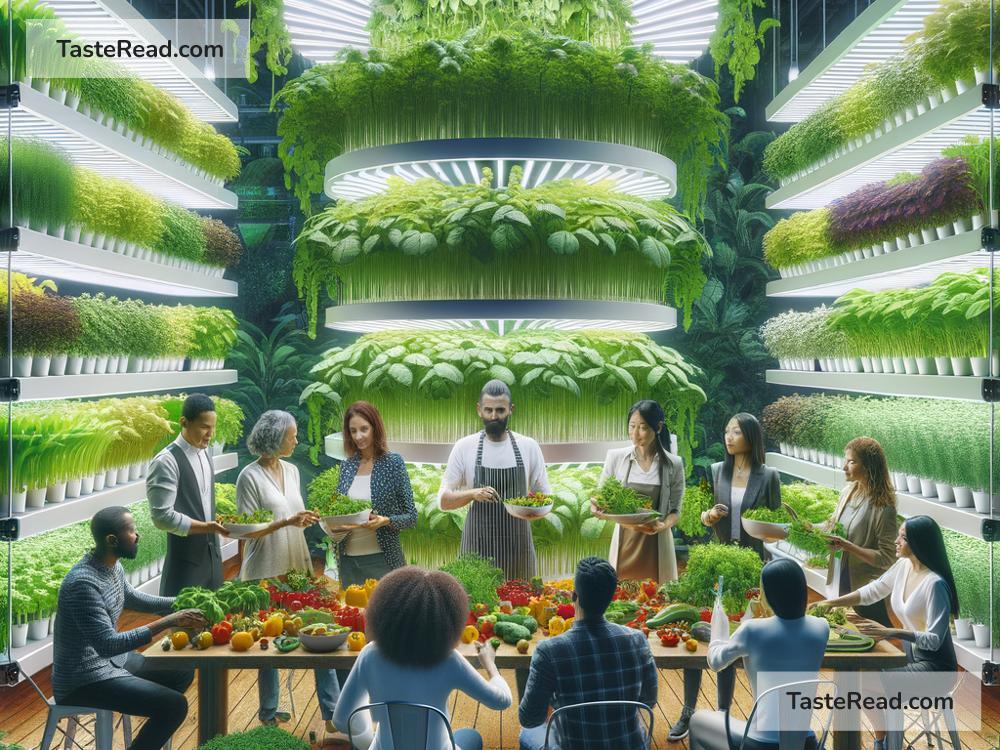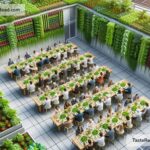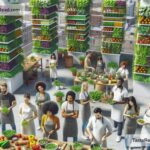The Future of Food: Sustainable Collaboration for a Better World
When it comes to food, the choices we make today will shape how future generations eat tomorrow. Food is more than just something we consume; it’s deeply connected to health, culture, the environment, and even the economy. But with the world facing challenges such as climate change, growing populations, and scarce resources, we must ask ourselves: What does the future of food look like? And how can we ensure it’s sustainable?
The answer lies in collaboration—working together across nations, industries, and communities. By combining ideas, knowledge, and innovation, we can create a future of food that is healthy, equitable, and better for the planet.
Why Change Is Needed
Today’s food systems have serious flaws. Agriculture contributes significantly to greenhouse gas emissions, harming the environment and accelerating climate change. Dangerous farming practices, such as overusing fertilizers and pesticides, are damaging soils and polluting water supplies. Moreover, global food waste is staggering—about one-third of all food produced gets thrown away. At the same time, millions of people globally face hunger or lack access to nutritious meals.
Adding to this challenge is population growth. By 2050, the world’s population is expected to rise to nearly 10 billion people. Feeding this many mouths will require us to rethink how we grow, process, and distribute food, while protecting our planet.
What Is Sustainable Food?
The term “sustainable food” refers to food that is produced in ways that don’t harm the environment, respect animal welfare, and prioritize health, community, and fairness. This includes practices that reduce waste, limit resource use, and reduce pollution, while ensuring that farmers and workers are treated equally.
Sustainable food systems focus on a balance. For example, growing crops without overusing resources like water preserves ecosystems. Supporting local farmers reduces food transportation emissions. Using new technology to improve farming can also make food production more efficient. Ultimately, the goal is to create systems that benefit both humans and nature.
The Role of Collaboration
One country or company can’t tackle these challenges alone. The future of food relies on partnerships among governments, businesses, researchers, farmers, and citizens. Collaboration allows people to share ideas, resources, and technology, creating solutions faster and on a larger scale. Countries can work together to share agricultural practices that work in different climates, while communities can exchange knowledge to reduce food waste or increase sustainable diets.
Companies also have an important role to play. Big food businesses can invest in eco-friendly practices, support local farmers, and create plant-based alternatives to traditional meat. Many companies are already stepping up by committing to zero-waste policies and experimenting with innovative packaging that reduces plastic use.
On the local level, people can work together to support farmers’ markets, grow food in community gardens, or start composting programs to reduce waste. Schools and cities can educate citizens about sustainable eating and encourage plant-rich diets. These small changes can have big impacts collectively.
Technology and Innovation in the Future of Food
New technology is paving the way for exciting changes in food production. For example, scientists are developing vertical farms—food grown indoors stacked in tall buildings. These farms use less land, water, and pesticides while producing fresh vegetables closer to urban areas.
Another innovation is lab-grown meat, also known as cultured meat. Using cells from animals, scientists can produce meat without the need for raising or slaughtering animals, reducing environmental damage caused by factory farming. While lab-grown meat is expensive now, it may become affordable and widely available in the near future.
Other smart technologies include precision agriculture, where drones and sensors help farmers monitor soil health and apply fertilizers wisely. 3D printing may even allow us to create customized meals tailored to nutritional needs and personal preferences.
The Importance of Sustainable Diets
It’s not just about how food is grown—it’s about how we eat, too. Eating sustainably means choosing food that’s better for the planet and our bodies. For example, eating less meat and dairy (which require a lot of natural resources to produce) and adding more plants, grains, and legumes to our meals can make a big difference. Supporting seasonal foods grown locally reduces transportation emissions and ensures freshness.
Food waste is another area we can address. Many of us throw away perfectly good food simply because it’s past its sell-by date or looks imperfect. Learning how to store food better and being mindful about portion sizes can help reduce waste and save money.
Looking Ahead
The future of food depends on the actions we take today. By working together to build sustainable systems and exploring innovative solutions, we can ensure that food is available to everyone without harming the planet. Governments must apply policies to support these ideas, businesses must invest in sustainability, and everyday people must make smart choices to reduce waste and switch to eco-friendly diets.
This journey requires teamwork and shared responsibility. But with collaboration, optimism, and creativity, the future of food can be delicious, accessible, and sustainable for generations to come. Let’s work together to build a world where every meal benefits both humanity and the Earth.


